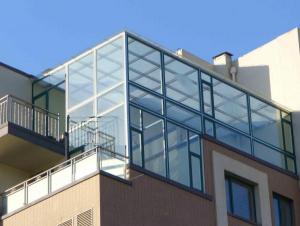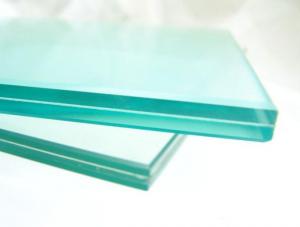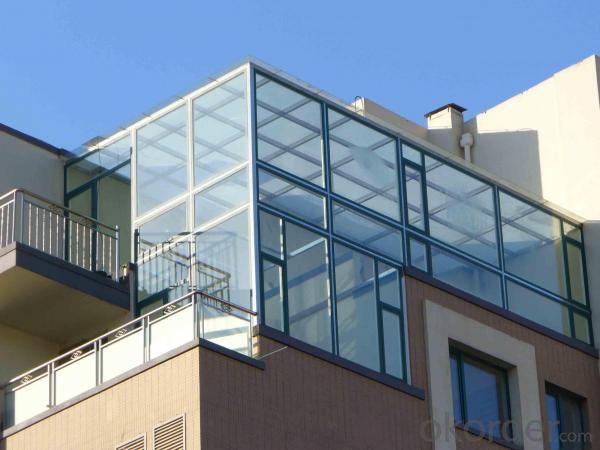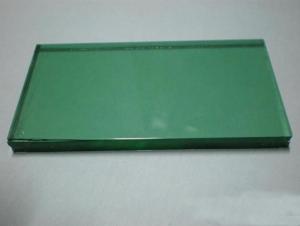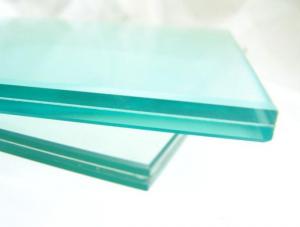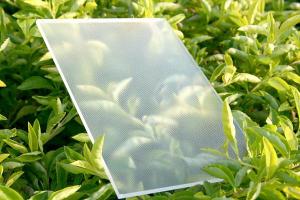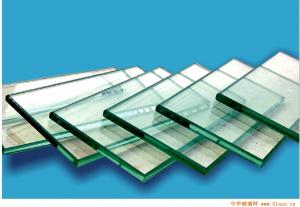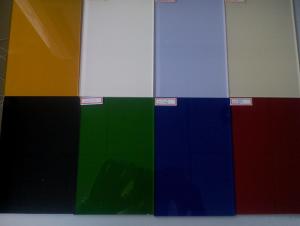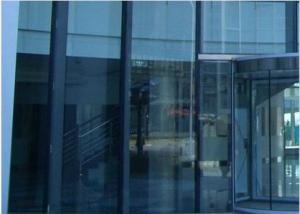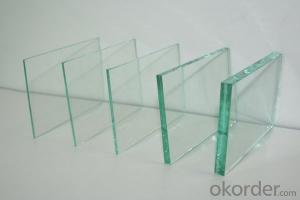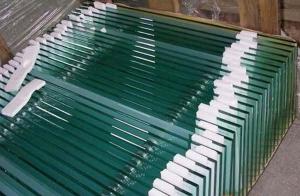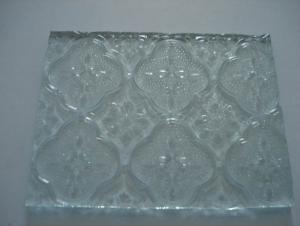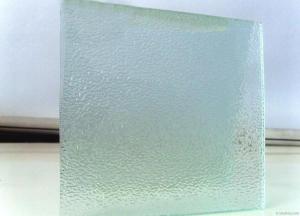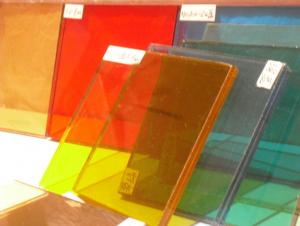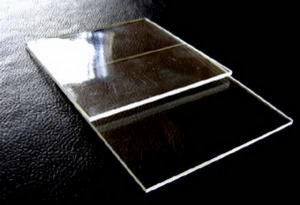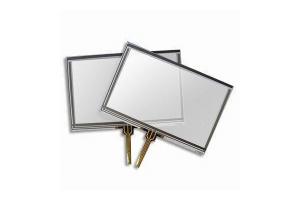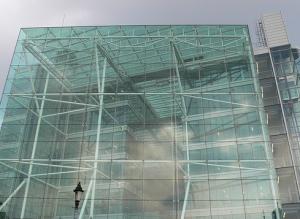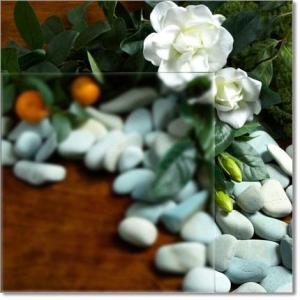Clear Laminated Glass
- Loading Port:
- China Main Port
- Payment Terms:
- TT or L/C
- Min Order Qty:
- 100 m²
- Supply Capability:
- 10000 m²/month
OKorder Service Pledge
OKorder Financial Service
You Might Also Like
Laminated Glass is made of high quality float glass, coated glass of various colors, Low-E glass, tempered glass, thermo-strengthening glass and bent/tempered glass. It is a product integrated with two or more glass sheets and one or more layers of organic polymers like PVB, EVA, SGP, etc. It is processed by the tablet machine under high pressure and high temperature, making it unite into one lastingly.
Features of Clear Laminated Glass:
1. Safety glass
2. Fine light control and heat insulation when using coated glass
3. Sound insulation and noise reduction
4. Good structural feature
5. In order to guarantee the quality of laminated glass, the PVB films are imported from Dupont of the USA or Sekisui of Japan.
6. The colors of the films include clear, milk, blue, dark grey, light green, bronze, etc.
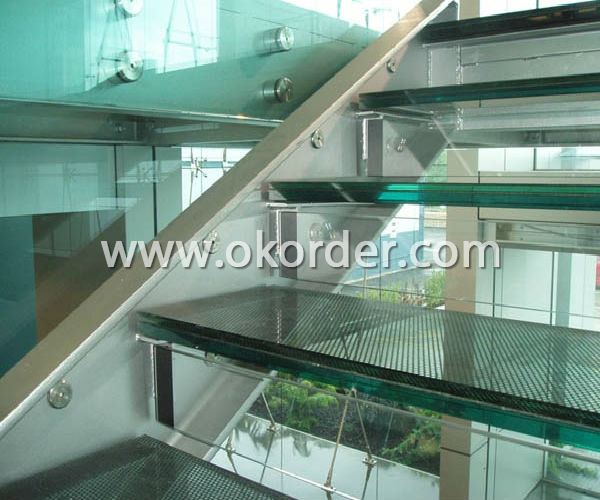
Specifications of Clear Laminated Glass:
Thickness of Glass: 3mm+3mm; 4mm+4mm; 5mm+5mm; 6mm+6mm; 8mm+8mm; 10mm+10mm; 12mm+12mm
Thickness of PVB film: 0.38-3.04mm
Size:
Min Size: 300*300mm
Max Size: 3000*8000mm
customized size
Applications of Clear Laminated Glass:
Laminated Glass is applied in curtain walls, hotels, banks, airports, sunshades, lighting roofs, windows and gates, sprung roofs, indoor glass partitions, glass furniture, show windows, bars, jewelry shops, elevators and so on.
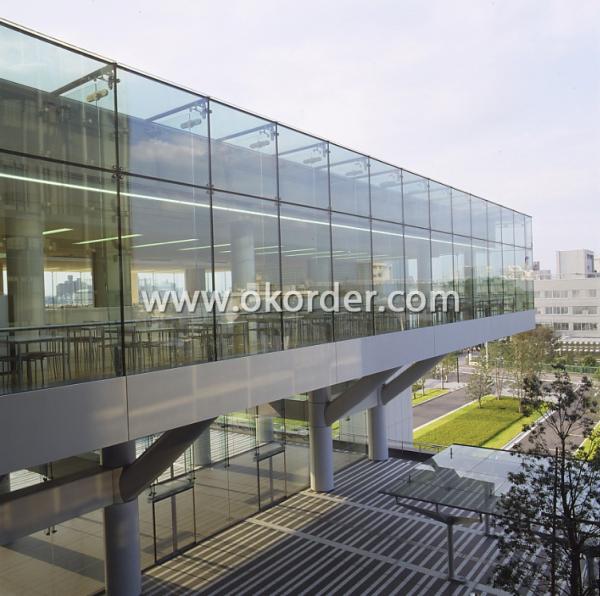

- Q: How can glass frosting be formulated? What raw materials do you use?
- The frosting frosting liquid before configured with plastic (or bamboo sticks) fully stir until frosting, and then prepare the medicine 80 mesh will be good all the time was filtered, the filtrate into the box (with sand sprinkling), filter residue (crystal) with plastic barrels (good to be frosted glass after the completion of the work, with 80 of the screen will put back the crystal installed frosting solution is dissolved, so repeated operation, the filter residue (crystal) can recycling, prolong the service life of frosting liquid).
- Q: How is glass made?
- Technological process:1, raw materials broken: the above raw materials broken into powder;2, weighing: according to the list of ingredients, called a certain amount of powder;3, will be called: the mixed powder mixing, stirring into a batch (colored glass and colorant);4, melting: the mixture into the glass furnace, melting at 1700 degrees into glass;5, forming: the glass liquid into a tin bath (float), pull machine (lattice method), rolling machine (rolling method, adding metal wire is wire glass), forming the flat glass;6, annealing: the molding of glass products into the annealing furnace annealing, balance the stress, to prevent self cracking.
- Q: Not man-made destruction, why toughened glass suddenly broken?
- There are a variety of predisposing factors 2. tempered glass explodeFor example, A. before the installation of glass is accidentally damaged, like chipping, knocked the feet, because the glass is tempered around the weak area, its strength even weaker than the non tempered glass, but this part of the damage are not likely to cause the glass immediately burst, but changed the internal stress of glass. When the upper wall is used, the internal stress changes gradually, which breaks the glass.B. such as differences in temperature after installation. As you say, temperature, weather, and so on, will make the internal pressure of the glass partial uneven, thus causing burst.Is there a correct size for the C. installation?. If the installation is too tight, the specifications are not appropriate, it will cause stress changes inside the glass, causing a burst.D. the rest is external force, including impact, extrusion and so on. It's not just human impact, or other things, or even wind in nature. If the glass does not fall on the ground, there will be the point of impact (if it is obvious, there will be explosive, Hu Dieban) these can be invoked, but if in the proceedings can only be said to be a possibility, because you have no evidence to prove that. In the domestic situation, the glass manufacturers generally compensate for the glass trouble.
- Q: The main reasons for failure of air glass are outlined
- The production of hollow glass raw material quality; key factors affect the service life of hollow glass sealant is ageing resistance and desiccant adsorption capacity, and the determining factor is the performance of sealant. Because no matter how much the desiccant adsorption capacity, inside the hollow glass after a certain limit, when the hollow glass desiccant completely saturated, again good desiccant also unable to water vapor adsorption, then the hollow glass is invalid. Only when the sealant has good sealing performance, moisture permeability coefficient is low, the amount of water vapor into the hollow glass rarely, and keep this state, only rarely can guarantee the hollow glass desiccant inside gas drying, so as to ensure the effect of hollow glass. To keep the sealant unchanged for a long time, it must require the sealant has good anti-aging properties, if the material quality is not good, it will affect the life of hollow glass products, in all sealants, most can reflect is butyl rubber as the basic raw materials of various types of sealant sealant and moisture barrier properties, and so on standard hollow glass curtain wall curtain wall must adopt double sealing is a very correct decision. Here are a variety of sealants water vapor permeability coefficient table, from the table we can see that the structure of glue can not be used as insulating glass sealant alone.
- Q: Comparison of plexiglass steel bridge and inorganic glass steel bridge
- Organic glass fiber reinforced plastics and inorganic glass fiber reinforced plastic properties of one, plexiglass resin (referred to as resin) advantages: 1, good toughness; 2, high strength; 3, waterproof performance is good; 4, light weight. (the weight of inorganic glass of the same size is about 1.2 times of that of plexiglass) and the disadvantages of organic glass fiber reinforced plastics: 1. Not high temperature resistant. (in general, the temperature is 70 degrees Celsius, it has begun to deform) 2, no aging resistance. (affected by ultraviolet light, easy to deformation, fade) 3, easy to burn.
- Q: What kind of material is made of automobile glass?
- Glass raw material, main raw material, quartz sandThe main raw material of automotive glass is pressure PVB and glass substrate
- Q: Is the price of glass raw material the biggest proportion of quartz?
- In the long run, quartz is a non renewable energy source, and the trend is rising for a long time.
- Q: Which is the best solar water heater tube?
- The vacuum heat collecting tube has the mirror surface complete, bright and clean, without blackening and blackening.
- Q: What are the characteristics of the gas flow in the flame space of a glass furnace?
- Melting: mix into the glass melting furnace, at 1700 degrees of melting into glass liquid; 5, molding: the glass liquid into a tin bath (float), pull machine (lattice method), rolling machine (rolling method, adding metal wire is wire glass), forming the flat glass; 6, annealing: the glass forming into the annealing furnace annealing, stress balance, prevent from breaking crack. Finally, inspection and packing.
- Q: FRP process piping manufacturing process?
- A, lined with resin preparation. According to the quality control department according to the work environment, temperature conditions made resin formula system for lining resin matching, batching quantity according to the manufacturing schedule reasonable grasp. When the situation changes, the quality inspection department and the manufacturing department shall adjust the formulation in time, and prepare the resin according to the new formula;B, material preparation. According to the design requirements, the material needed for making the lining is transported to the designated position, and some wide width reinforcement materials are firstly cut and processed to the design width;C, lining production. According to the design requirements of the paving layer step liners, each layer in the process of laying under reasonable tension between the amount of overlap, and combined pressure roller rolling repeatedly from bubble to ensure fiber soaked completely. And requests each enhancement material layer to achieve the design resin content request;D, preliminary self check. According to the design requirements of overlay end of each layer, the operation requirements for quality testing of workers: whether the design meets the lining thickness, whether there is a local poor glue, hanging glue phenomenon, whether there is a white spot, whether there is a bubble, etc., if the occurrence of the above situation timely report and take measures;
1. Manufacturer Overview
| Location | Jiangsu, China |
| Year Established | 2008 |
| Annual Output Value | US$ 1 Million - US$ 2.5 Million |
| Main Markets | Northern Europe, Africa |
| Company Certifications | Certificate for China Compulsory Product Certification |
2. Manufacturer Certificates
| a) Certification Name | |
| Range | |
| Reference | |
| Validity Period |
3. Manufacturer Capability
| a) Trade Capacity | |
| Nearest Port | Shanghai |
| Export Percentage | 21% - 30% |
| No.of Employees in Trade Department | 3-5 People |
| Language Spoken: | English; Chinese |
| b) Factory Information | |
| Factory Size: | 5,000-10,000 square meters |
| No. of Production Lines | 9 |
| Contract Manufacturing | OEM Service Offered; Design Service Offered; Buyer Label Offered |
| Product Price Range | Average |
Send your message to us
Clear Laminated Glass
- Loading Port:
- China Main Port
- Payment Terms:
- TT or L/C
- Min Order Qty:
- 100 m²
- Supply Capability:
- 10000 m²/month
OKorder Service Pledge
OKorder Financial Service
Similar products
Hot products
Hot Searches
Related keywords
